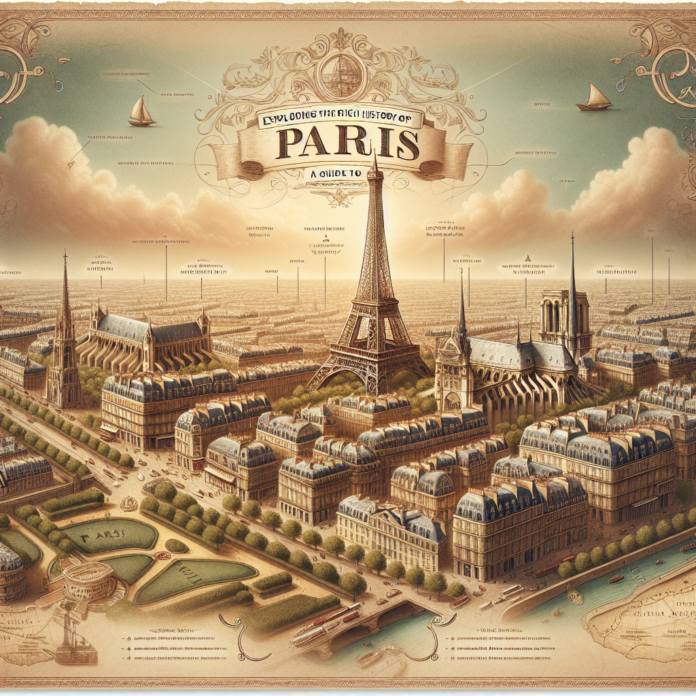[ad_1]
Paris, the capital city of France, is renowned for its rich history and cultural heritage. From iconic landmarks to charming alleyways, every corner of the city tells a story. In this guide, we will take you on a journey through some of Paris’s most historical sites and delve into the fascinating tales behind them.
The Louvre Museum
The Louvre Museum is one of the most famous museums in the world, housing a vast collection of art and artifacts from various civilizations. Originally built as a royal palace in the late 12th century, the Louvre has undergone several transformations over the centuries. Today, it is home to masterpieces such as the Mona Lisa, the Venus de Milo, and the Winged Victory of Samothrace.
Notre-Dame Cathedral
Notre-Dame Cathedral is a stunning example of French Gothic architecture and one of the most iconic landmarks in Paris. Construction of the cathedral began in the 12th century and took nearly 200 years to complete. Notre-Dame has witnessed many significant events in French history, including the coronation of Napoleon Bonaparte and the liberation of Paris during World War II.
The Eiffel Tower
The Eiffel Tower, named after its designer Gustave Eiffel, is a symbol of Paris and a marvel of engineering. Built for the 1889 World’s Fair, the tower was originally intended to be a temporary structure. However, it quickly became a beloved landmark and has stood the test of time. Today, the Eiffel Tower offers breathtaking views of the city from its observation decks.
Palace of Versailles
The Palace of Versailles is a magnificent royal residence located just outside of Paris. Built in the 17th century by King Louis XIV, the palace served as the seat of the French court and government until the French Revolution. The palace’s opulent décor and grand gardens reflect the luxurious lifestyle of the French monarchs.
Montmartre
Montmartre is a historic neighborhood in Paris known for its bohemian atmosphere and artistic heritage. The neighborhood was a hub for artists such as Pablo Picasso, Vincent van Gogh, and Henri de Toulouse-Lautrec in the late 19th and early 20th centuries. Today, Montmartre retains its artistic charm with its many galleries, cafes, and street performers.
FAQs
Q: What is the best time to visit Paris?
A: Paris is a year-round destination, but the best time to visit is during the spring (April to June) and fall (September to November) when the weather is mild and the crowds are smaller.
Q: How do I get around Paris?
A: Paris has an extensive public transportation system, including buses, trams, and the Paris Metro. You can also rent a bike or take a taxi to get around the city.
Q: What is the currency in Paris?
A: The official currency of France is the Euro.
Q: What are some traditional French dishes to try in Paris?
A: Some traditional French dishes to try in Paris include croissants, escargot, coq au vin, and boeuf bourguignon.
Q: Are there any day trips I can take from Paris?
A: Yes, there are many day trips you can take from Paris, including visits to Versailles, Giverny, and the Champagne region.
Q: Is it safe to travel to Paris?
A: Paris is generally considered a safe city for tourists, but like any major city, it is important to exercise caution and be aware of your surroundings.
Paris is a city that never fails to captivate visitors with its beauty, history, and cultural riches. Whether you are exploring the Louvre Museum or strolling along the Seine River, every moment spent in Paris is a journey through time. We hope this guide has inspired you to delve deeper into the rich history of this enchanting city.
[ad_2]


